Hello Dear People,
I’m sending this newsletter today primarily as a mid-month reminder of our free August events from the Village Writing School. See links at the bottom of this page.
Since my last two posts have been so much about me me me, this week I wanted to attempt to write something for you that was thoughtful or inspirational or useful. But I’m still in Arkansas, sorting and packing and tracking down distant cousins I’ve never met to see if they want their great-great-grandma’s doll, which, like so many things, I somehow HAVE.
A few days ago, I was interviewed by another historical novelist for her newsletter. It was lovely to summarize what my little medieval Italian town (Certaldo) and the stories that I set there mean to me. So, I’m sharing that interview with you today. (Check out Tinney’s website for her blog/newsletter and ways to order her books. I’ve said before that A Thing Done is one of my favorite medieval novels of all time.)
The pictures make me miss Italy a LOT and talking about my stories reminds me how much I love to write and why.
Finding our stories . . . and ourselves.
Alison
Hi Readers. I have a treat for you this month. I want to introduce you to author Alison Taylor-Brown and her remarkable series of short stories about Giulia (pronounced Julia), a medieval holy woman from the Tuscan town of Certaldo, about 20 miles from Florence. We’ll talk to Alison about how she chose this particular historical woman to write about and what it was like to learn about her subject on the spot. I've been to Certaldo, but Alison actually lived there, and you can see her deep connection to the city in her stories.
You lived in the village where the Giulia stories take place. How long were you there, and what was that like?
I was there four years, Tinney, and it was just magical. Certaldo Alto, which means "High Certaldo," is one of those little walled hilltop towns that you see all over Italy and you wonder if anyone really lives there. They do, and I did. The year-round population is around 200. The people were so warm and friendly. Many afternoons, I'd go up and sit with a group of older people who gathered on the street. Sometimes they would speak about being children during the war. And they helped me in countless ways as I learned to navigate the intricacies of day-to-day life in Italy.
But for someone who loves history the way you and I do, to be surrounded by these buildings that were built in the 1200s and 1300s was just amazing. Certaldo is built over an Etruscan village and the Etruscans loved caves and underground rooms. There are multiple levels of arched rooms beneath Certaldo, and once these were joined by underground tunnels so that you could go from one end of town to the other without ever coming up. I have been in houses with three stories of cellars beneath the ground. I've been in houses with sealed underground rooms that no one can get into. It's quite mysterious and thrilling. You can just feel the centuries of life practically vibrating in the air. I loved it so much.
And this character that you've recreated, Giulia. Tell us about her.
Well, she was a real person, born in 1319 there in Certaldo. I first became acquainted with her when I went into the little local church and there was a skeleton in a glass coffin. To an American, this was just incredible and quite macabre. But this is still normal in Italy and a number of churches have a local "holy" woman. On Sundays, as people come into the church, before they take their seats, most of them stop by and say a word to Giulia.
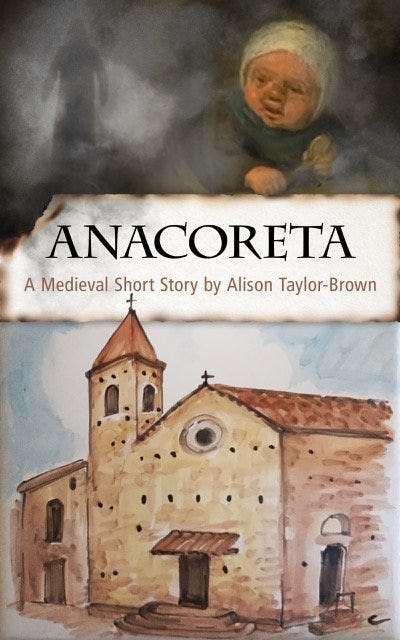
Once or twice a year, they take Giulia out of that church and carry her down to the larger church in the valley where she lies around for a day or two, and then she comes home after dark in a candlelit procession. They line the little winding road that climbs up the steep hill and through the city gate with candles and everyone carries candles. It's quite beautiful. It was so exotic to me when I first saw it, but after four years, seeing Giulia's skeleton was as normal as having a thirty-minute discussion on the merits of square spaghetti. That's Italy.
And why did you decide to write about her?
I was trying to find a deeper spirituality for myself, more than just the rule-based, punishment/reward system I grew up in. So I was reading widely--almost randomly--but I kept being led back to these medieval mystics like Hildegard of Bingen and Julian of Norwich. And I began to realize that there was a great parallel between their time and ours.
In both eras, you have the institutional, predominantly patriarchal, dogma-driven, "official" church, but you also have another stream of thought entirely, which flows beneath the official church. And this strong stream of Christianity focuses on a deeply intimate relationship with God and a radical compassion for all humanity, which is created in the image of God. This was often expressed by women thinkers and writers--often by lay women like Giulia.
We know absolutely nothing about Giulia's theology. If she left any writings they have been lost or destroyed. So I was free to create her as a composite of her contemporaries, such as Julian of Norwich. And as the stories unfold, you watch Giulia grow up and begin to question some of the teachings of the medieval church. You see the persecution of some of these free-thinking women, and you see Giulia's own thought begin to broaden and deepen. But as it does, she then has to navigate this tricky landscape between what she believes and her own personal relationship with God versus what the men in charge are telling her to do.
And I think today, as our institutional denominations grow more polarized and extreme in their dogmas, this strong stream of universal love and intimate relationship with the divine is also growing and swelling and, again, women are playing an important role in this alternative orthodoxy. "Just love," was Teresa of Avila's message. Just love right now, in this moment, whoever or whatever is in front of you to love. So I made that Giulia's message as well.
Thank you, Alison! I hope my readers will discover your stories, available HERE, and I'm delighted to learn that there will be more coming this fall. I'll be among your first customers.
Thank you, Tinney. I've learned so much about medieval life from you, this has been a real honor.
And for your readers, I'm always available to answer questions or discuss Giulia's stories. They can go to the Substack page or follow the link at the end of each story. I'd love to hear from them!
Writing Events FREE in August. We continue to offer workshops and summits from the Village Writing School archives to all newsletter subscribers!
Free Summit in August: Mystery/Thriller Summit
Free Workshop in August: Revision: the Art, the Craft, the Magic with Richard Adams Carey

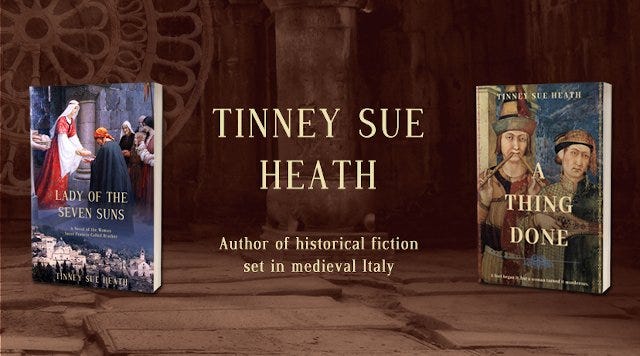
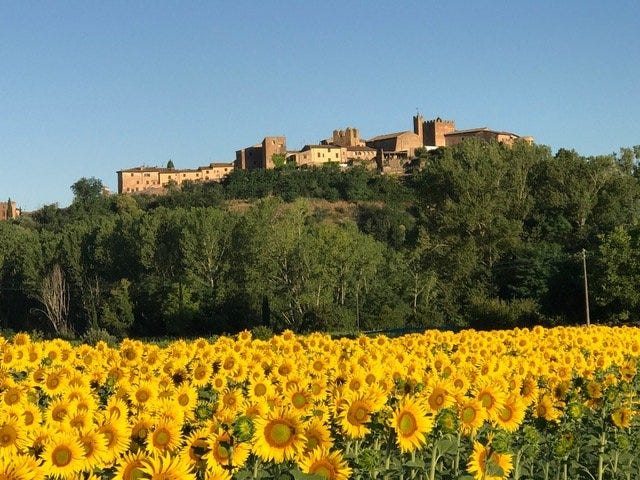
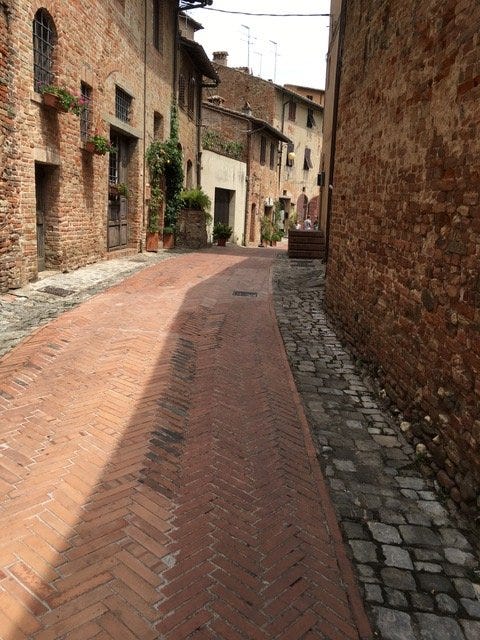
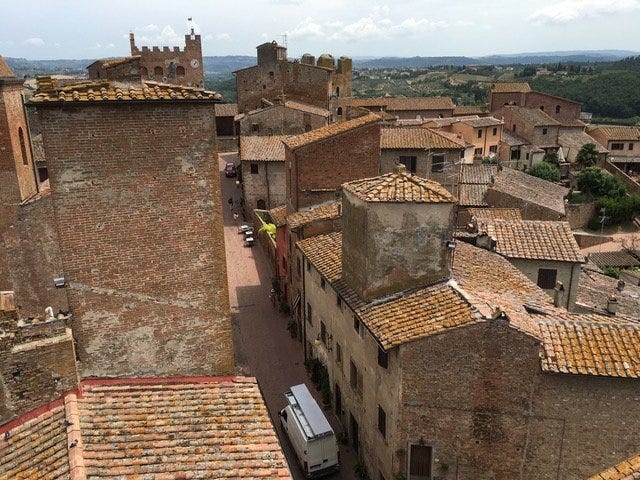
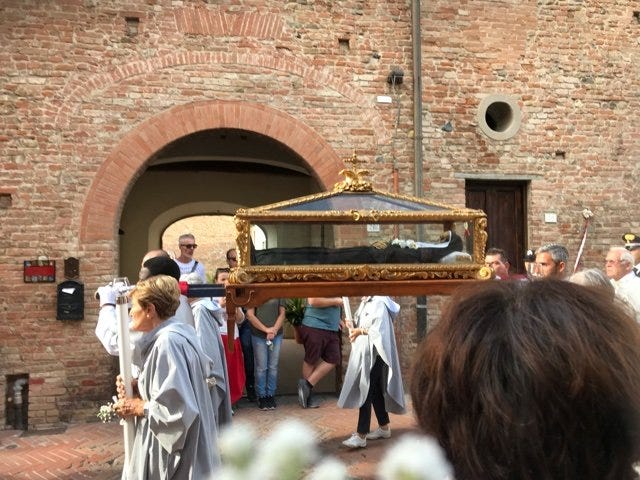
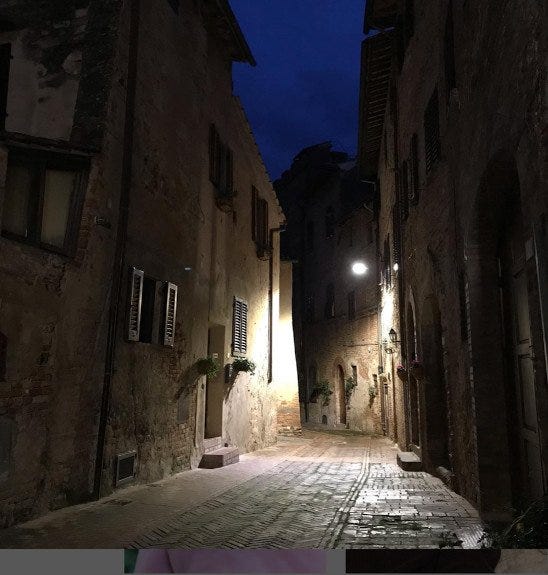
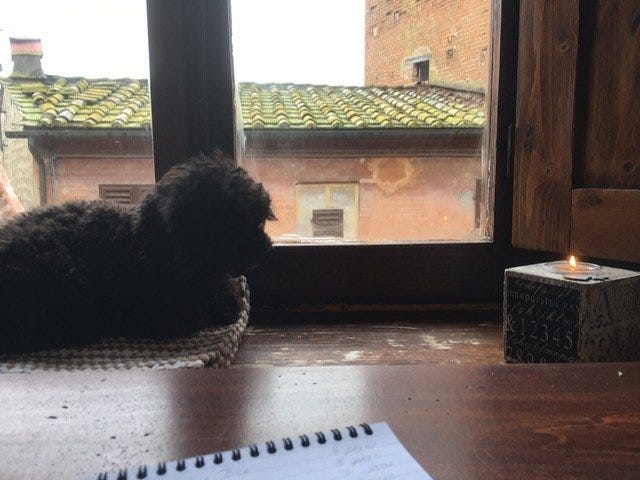
Loved the interview, Alison, and in particular how you see the parallel between religion and free-thinking of medieval times and today. By the way, I live in Florida. Not a whole lot of free-thinking allowed to go on here.
Alison, what a captivating interview! This is so evocative of Italy, the times, then and now, your Guilia, and your own inimitable voice as well. Thank you.
May the work of closing up house proceed peaceably and may your sense of humor thrive amid the minutia.